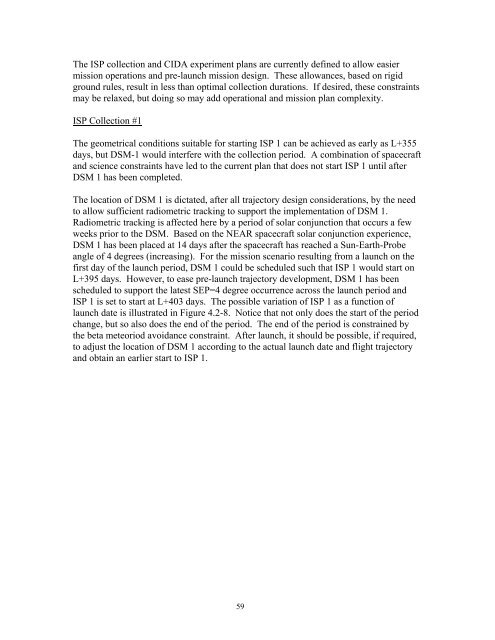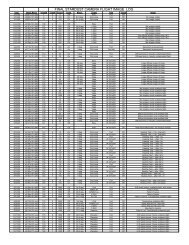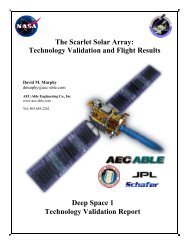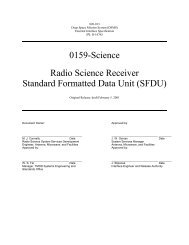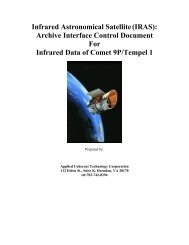MISSION PLAN - PDS Small Bodies Node
MISSION PLAN - PDS Small Bodies Node
MISSION PLAN - PDS Small Bodies Node
Create successful ePaper yourself
Turn your PDF publications into a flip-book with our unique Google optimized e-Paper software.
The ISP collection and CIDA experiment plans are currently defined to allow easier<br />
mission operations and pre-launch mission design. These allowances, based on rigid<br />
ground rules, result in less than optimal collection durations. If desired, these constraints<br />
may be relaxed, but doing so may add operational and mission plan complexity.<br />
ISP Collection #1<br />
The geometrical conditions suitable for starting ISP 1 can be achieved as early as L+355<br />
days, but DSM-1 would interfere with the collection period. A combination of spacecraft<br />
and science constraints have led to the current plan that does not start ISP 1 until after<br />
DSM 1 has been completed.<br />
The location of DSM 1 is dictated, after all trajectory design considerations, by the need<br />
to allow sufficient radiometric tracking to support the implementation of DSM 1.<br />
Radiometric tracking is affected here by a period of solar conjunction that occurs a few<br />
weeks prior to the DSM. Based on the NEAR spacecraft solar conjunction experience,<br />
DSM 1 has been placed at 14 days after the spacecraft has reached a Sun-Earth-Probe<br />
angle of 4 degrees (increasing). For the mission scenario resulting from a launch on the<br />
first day of the launch period, DSM 1 could be scheduled such that ISP 1 would start on<br />
L+395 days. However, to ease pre-launch trajectory development, DSM 1 has been<br />
scheduled to support the latest SEP=4 degree occurrence across the launch period and<br />
ISP 1 is set to start at L+403 days. The possible variation of ISP 1 as a function of<br />
launch date is illustrated in Figure 4.2-8. Notice that not only does the start of the period<br />
change, but so also does the end of the period. The end of the period is constrained by<br />
the beta meteoriod avoidance constraint. After launch, it should be possible, if required,<br />
to adjust the location of DSM 1 according to the actual launch date and flight trajectory<br />
and obtain an earlier start to ISP 1.<br />
59


